Mexico’s bustling capital needs a transport system that can handle its 26 million-strong population. The metro system is a user-friendly, efficient way to navigate the sprawling city. But there is more than you might expect of a metro underneath this vibrant city’s streets, as the metro corridors double up as a massive canvas for the art and culture of the city.
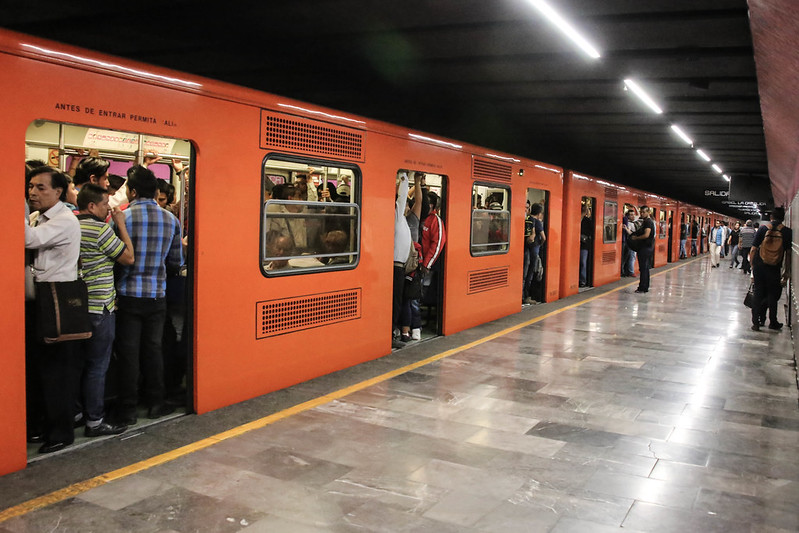
Mexico City’s metro transports 5 million+ passengers a day (Photo: Paul Sableman via Flickr (CC BY 2.0))
Daily, some five and a half million passengers navigate the Mexico City’s metro system. An immense 140 miles of tracks connect riders to 195 stations across the north, south, east and west of the vast city, for the economical price of just 5 pesos (20p/$0.25) a journey.
Recently celebrating 50 years of operation, the Mexico City Metro is a cultural, historical and mechanical success. The city opened its first line on September 4, 1969, and since then has grown exponentially underneath the rapidly evolving metropolis.
History of the Metro
These days Mexico City has a bit of a reputation for high levels of pollution, severe traffic congestion and overcrowded public transport; all this despite the introduction, and expansion, of its metro. Going back over 50 years, these were the very reasons for its construction.
In the 1960s, Mexico’s population was increasing and the government eventually agreed that the creation of the metro was not only a practical solution to the city’s growth but also a way to modernize the city and raise the status of the capital. The man behind the metro was engineer Bernardo Quintana. For some years he had tried to convince power brokers to invest in a subterranean transport system. Finally, in 1967, his persistence paid off. Seeking to replicate the success of similar European projects in Mexico, the initial phases of construction began. Two years later, the first line, serving 16 stations, opened.
Fast-forward to the end of 1985 and the metro had expanded rapidly to 105 stations and over 68 miles of tracks. The transport network had to keep up with a city that was continually changing; adding and extending lines to reach the suburbs and busy districts of the city. Keeping the metro aligned with the needs of the city has led to the completion of 12 lines so far, the most recent of which opened in 2012.
And it would appear the journey of the metro isn’t over just yet. Now the city plans to focus on modernization rather than further expansion. Increasing the capacity of the metro is a key aim, as the local transport authorities intend to increase the current lines’ capacity by one million; introducing larger, more modern trains to the lines as well as increasing their frequency.
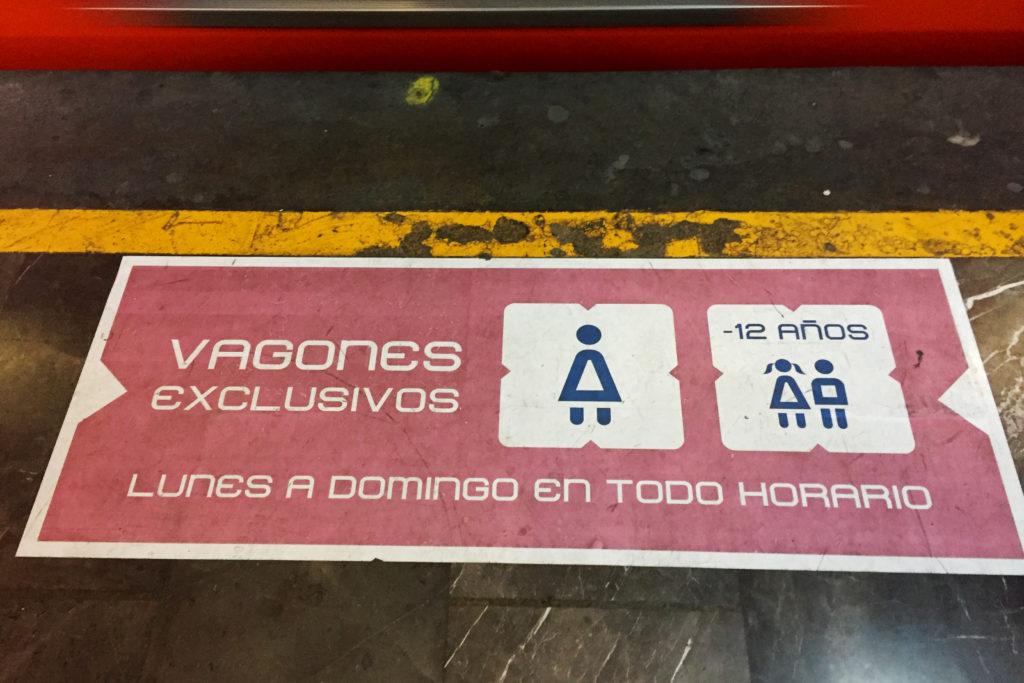
Signs highlight carriages for exclusive use by women and children (Photo: Roisin McAuley)
Women & Safety
Women’s safety is a huge issue in Mexico. Whilst the government provides lacklustre, if any, support to women, the metro does offer some resolution in the form of women and children only carriages. At one end of the tracks, these carriages are indicated by a sign reading ‘solo mujeres y niños,’ often accompanied below by a member of the police or security to ensure only women and children access these areas. Many women travelling on the metro, be it locals or tourists, often opt for these parts of the train.
Earthquakes are another safety concern for this city. The underground metro system is built inside box-like structures making them safer than you might expect when an earthquake hits. The system survived the powerful 1985 earthquake, and in 2017 when the earthquake struck on the same day 32 years later, the metro was back up and running within a few hours.
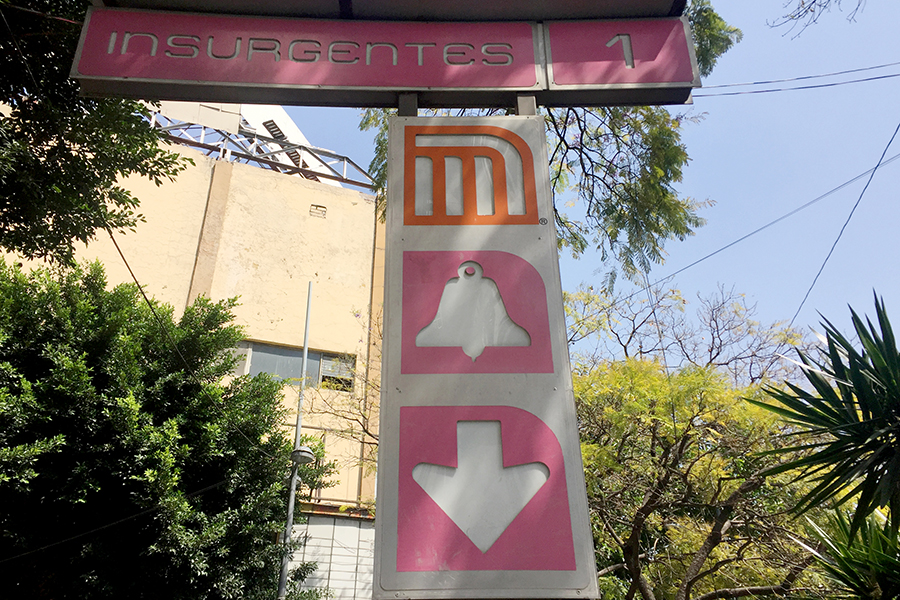
Colourful graphics guide passengers to and around the metro (Photo: Roisin McAuley)
The Design of the Metro
The first thing that stands out about the metro is its heavy visual identity. A large logo, or pictograph, identifies each station, dominating the text of their names. Perhaps, you might think that this graphic element is a helpful indicator to quickly inform commuters in this busy and often chaotic location, however, it has far greater importance to locals. This method of wayfinding was essential at the time of the metro’s introduction as it was being used overwhelmingly by passengers who often could not read, thus they rely on colours and visual cues to navigate across the city.
Each icon gives travellers a visual point of reference: sometimes images relate to something about the location of the station it represents; sometimes it simply pays tribute to key happenings or individuals from the city, with little connection to the actual location itself. In the special case of Talisman, the mammoth logo is a nod to the fossils discovered when excavating the site for the metro.
Designed by New York-based graphic designer Lance Wyman, the metro’s style is one of three of the designer’s marks on the city. Wyman was also responsible for the identities of the 1968 Mexico Olympics and the 1970 World Cup.
Nowadays, the metro has not lost touch with its creative roots. The tickets have small designs printed on them are regularly updated, making them a nice collectors’ item, whether you’re a design geek or avid memento hoarder.
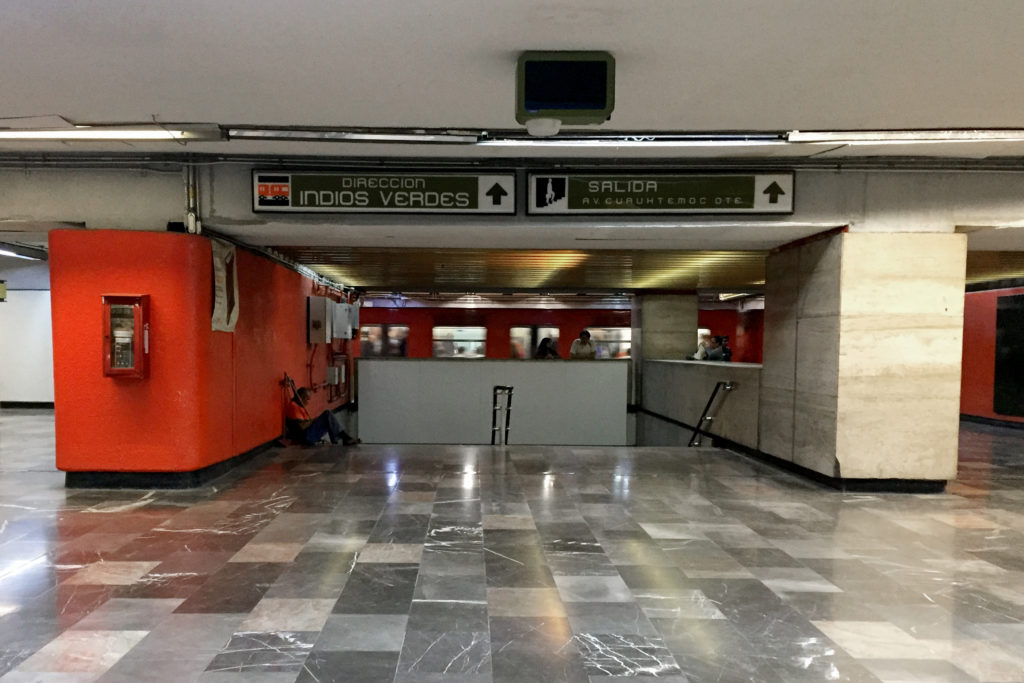
Inside Mexico City’s metro (Photo: Roisin McAuley)
How does it work?
Mexico City’s metro runs from 5 am to midnight, Monday through Friday; 6 am to midnight on Saturday and 7 am to midnight on Sunday. Bold signage directs passengers to the stairways that form the entrance to the metro stations. From here, passengers make their way to taquilla booths to purchase tickets: they are sold individually for just 5 pesos and last until you pass through the turnstiles of your last stop. This means with one ticket you can criss-cross the lines until you arrive at your destination. When you take your next journey, you’ll have to buy another ticket. Once your ticket is purchased head through the barrier, and don’t wait for it to be returned!
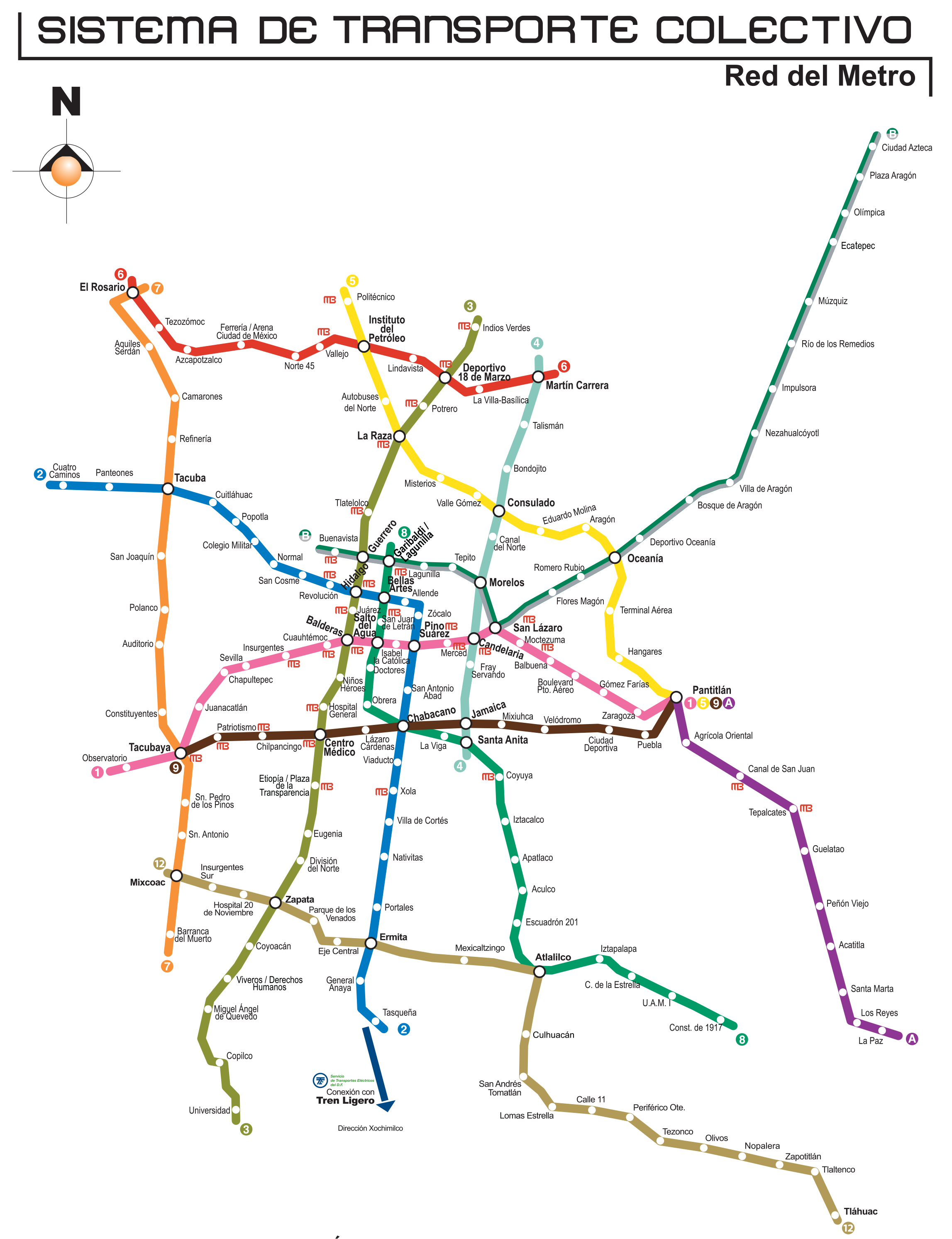
Mexico City Metro map
Regular users opt to use a MetroCard, which can be purchased at selected stations only and allows the user to use both the metro and Metrobus. The Metrobus can only be used with this card, whereas the metro can be used with paper tickets too.
As the biggest city in North America, the number of people passing through the metro every day reflects this and rush hour is a well-known peak of chaos. These hours are typically 7:30 am to 9:30 am and 5 pm to 6.30 pm during weekdays; if possible, it’s best to avoid travelling at this time.
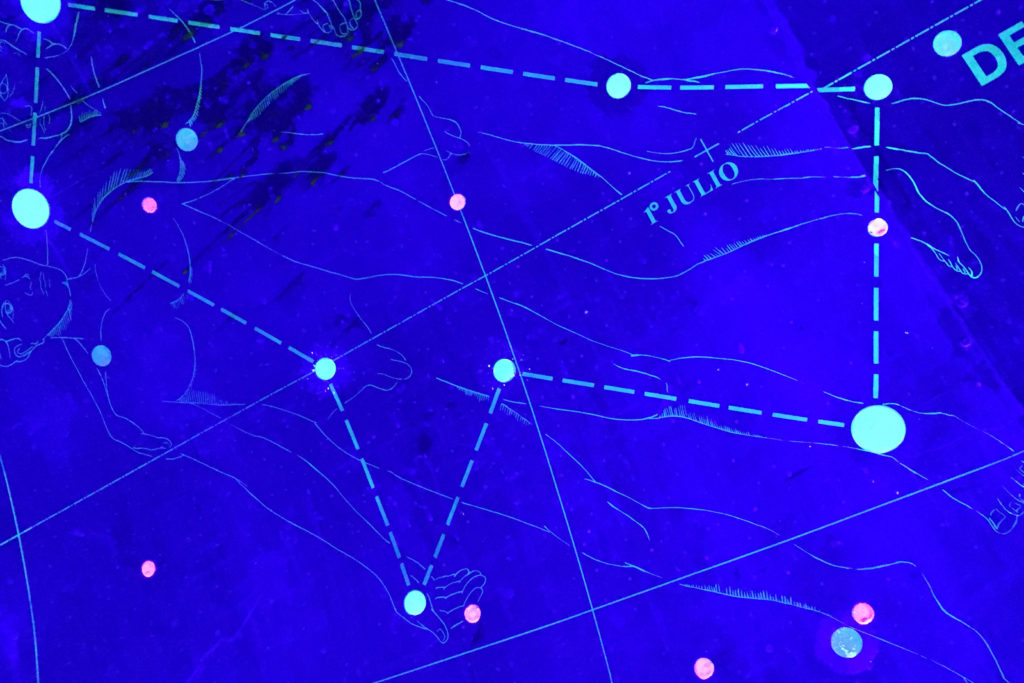
La Raza distracts commuters with a lesson in astrology (Photo: Roisin McAuley)
Must-See Stops
In a city renowned for its creativity and art galleries, the metro itself might be considered the biggest museum of the capital. A number of the metro stops themselves have been transformed into underground galleries and museums.
One key stop to look out for is the science-focused La Raza, which has the largest cultural display of the entire metro system thanks to the almost endless corridor that connects Line 3 and Line 5. El Túnel de la Ciencia, or the science tunnel, is transformed into dark solar systems and passages that document astronomy and, of course, science. Here, the gallery provides a welcome distraction for travellers navigating the distance between the lines.
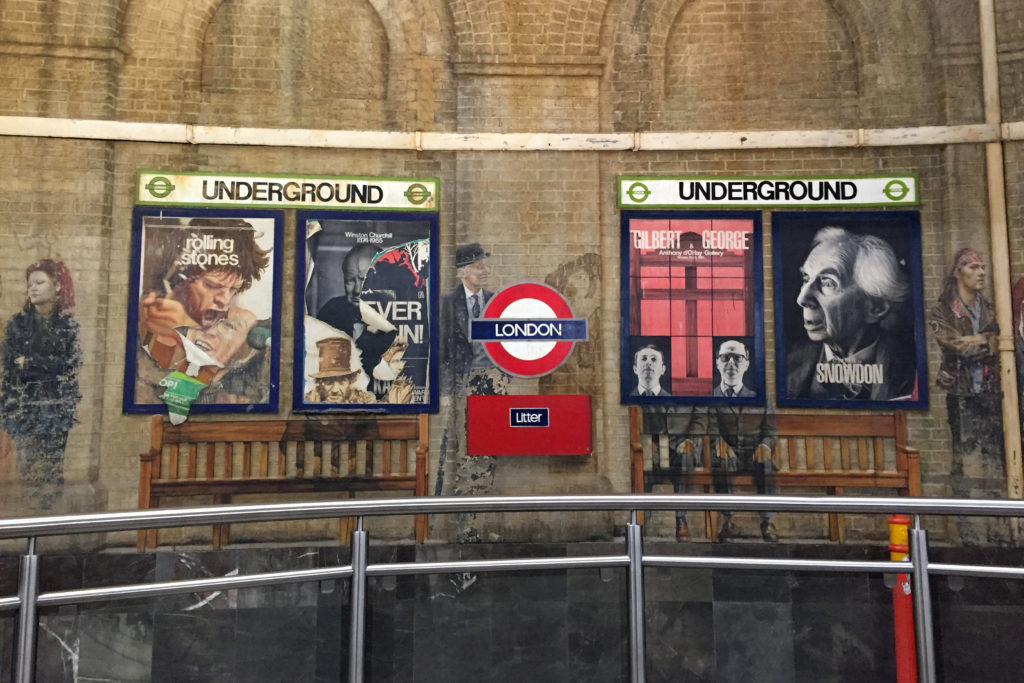
No, it’s not London. Insurgente’s metro station celebrates metros worldwide (Photo: Roisin McAuley)
Whilst the many visitors to the city will be seeking out Diego Rivera’s murals above ground, be sure to appreciate the modern murals of the metro. Head to Insurgentes for images celebrating both the country itself and the other metro systems of the world, or get off at Copilco and Tacubaya stations for incredible murals by Guillermo Ceniceros.
Elsewhere check out digital art at Bellas Artes; discover Aztec ruins at Pino Suarez, the small pyramid structure you’ll find here was unearthed when the metro line was being constructed; and marvel at the mammoth fossils at Talisman, which were similarly uncovered whilst excavating the ground for the metro.